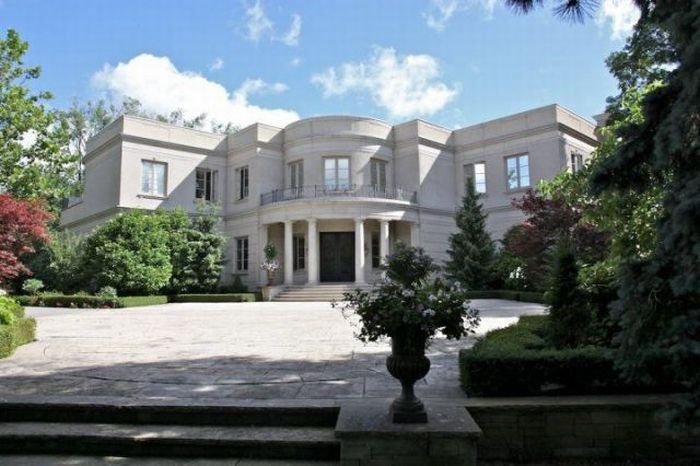|
|
Expensive Mansion, Toronto, Canada
|
"King" Derby's stamp of approval opened many other doors for McIntire, who went on to design and build mansions for John Gardner, Jerethmiel Peirce, Simon Forrester, and other wealthy Salem shipowners. He also built, on elegant Chestnut Street, a function hall (named for Alexander Hamilton) and church for the town's merchant class. McIntire also designed the former Salem Court House and Registry of Deeds.
After 1793, Samuel McIntire worked exclusively in the architectural style developed by Robert Adam in Great Britain and brought to America by the great Boston architect, Charles Bulfinch. The delicate Adamesque style, which emphasized decorative elements and ornamentation, was tailor made for McIntire whose unerring sense of design and proportion was exceeded only by his skill as a woodcarver. Carved swags, rosettes, garlands, and his signature sheaths of wheat dominate wood surfaces in McIntire homes built between 1793 and his death in 1811.
Even in Europe some 19th-century mansions were often built as replicas of older houses, the Château de Ferrières in France was inspired by Mentmore Towers which in turn is a copy of Wollaton Hall. Other mansions were built in the new and innovative styles of the new era such as the arts and crafts style: The Breakers is a pastiche of an Italian Renaissance Palazzo; Waddesdon Manor in Buckinghamshire is a faithful mixture of various French châteaux. One of the most enduring and most frequently copied styles for a mansion is the palladian - particularly so in the 18th century. However, the gothic style was probably the most popular choice of design in the 19th century. The most bizarre example of this was probably Fonthill Abbey which actually set out to imitate the mansions which had truly evolved from medieval gothic abbeys following the Dissolution of the Monasteries in the 16th century.
Mansions built during and after the 19th century seldom were supported by the large estates of their predecessors. These new mansions were often built as the week-end retreats of businessmen who commuted to their offices by the new railways, which enabled them to leave the city more easily. Before this era most owners of mansions were the old aristocracy.
|
|









